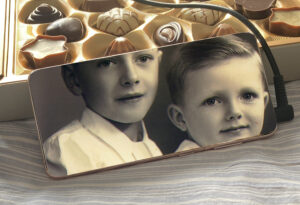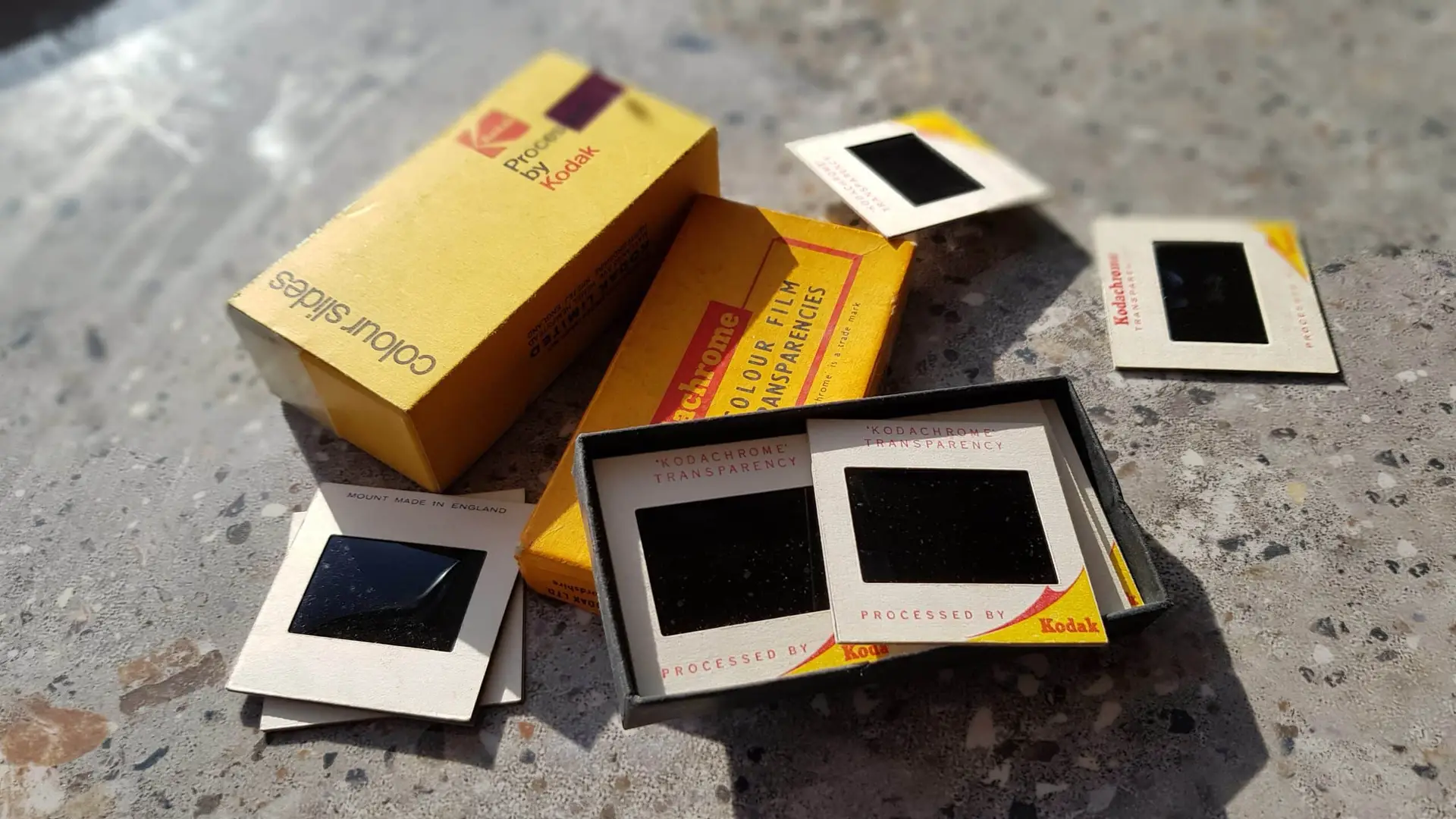


Many of us have encountered photo slides in our grandparents’ homes or school classrooms. It was an enjoyable experience to sit and observe each photo emerging on a wall as they cycled through a carousel projector. Another variant of photo slides that you might recall is the View-Master goggles. These goggles were secured to your head, allowing you to navigate through a series of backlit photographs one at a time, appearing in the goggle lenses.
Before movies, before television, all we had were still photos. For entertainment purposes, people would gather around and watch a slideshow of photo slides projected onto the nearest wall. A genius idea, right? But how did those little photos surrounded in cardboard frames come to be? Dive in with us as we look at the history of photo slides, slide projectors, and photographic colouring processes.
Magic lanterns
In the 17th century, people utilized glass slides and magic lanterns extensively for entertainment. Magic lanterns, an early form of slide projectors, would project images painted on glass slides to audiences. These magic lanterns and slides represent the earliest known forms of photo slides and slide projectors. For over 100 years, they remained the sole available machinery for projection.
The Hyaltype
In 1850, brothers William and Frederick Langenheim innovated a new slide technology known as the Hyalotype. A Hyalotype was a glass slide containing a positive photographic image copied from a negative. This marked the introduction of photographic slides, contrasting with the painted slides initially used for magic lanterns. The Langenheims’ Hyalotype could be projected via lantern, presenting photographic images for the first time.
The first color photo slides
So, the earliest commercially known photographic coloring process was the Lumiere Autochrome process. This additive process utilized a panchromatic emulsion on a thin glass plate coated with dyed potato starch grains. German company Agfa and British company Dufaycolour employed similar processes to produce color photographs on slides. These color slides represented a significant advancement compared to the black-and-white Haplotypes of the 1800s.
Subsequently, in the 1960s and 1970s, colour slide film became more widely available, and this led to a surge in popularity for photographic slides. They were commonly used for family vacations, travel photography, and educational presentations.
However, with the rise of digital photography in the 1990s and 2000s, photographic slides began to decline in popularity. Many photographers switched to digital cameras and stopped using film altogether, and digital projectors replaced traditional slide projectors.
Moreover, some photographers and artists still use photographic slides, although their prevalence has diminished. So, despite their reduced usage, they hold a significant place in photographic history and continue to be a subject of study and appreciation among collectors and historians.
So, when it comes to showcasing your photo slides, creating a photo slide show is an excellent option! If you encounter difficulties with this process, we recommend opting for our slide scanning service to digitize your old slides and preserve your memories.
So, for optimal results, consider engaging a dedicated slide scanning service, like the well-equipped and reputable company Supaphoto, to help you achieve the best outcomes.